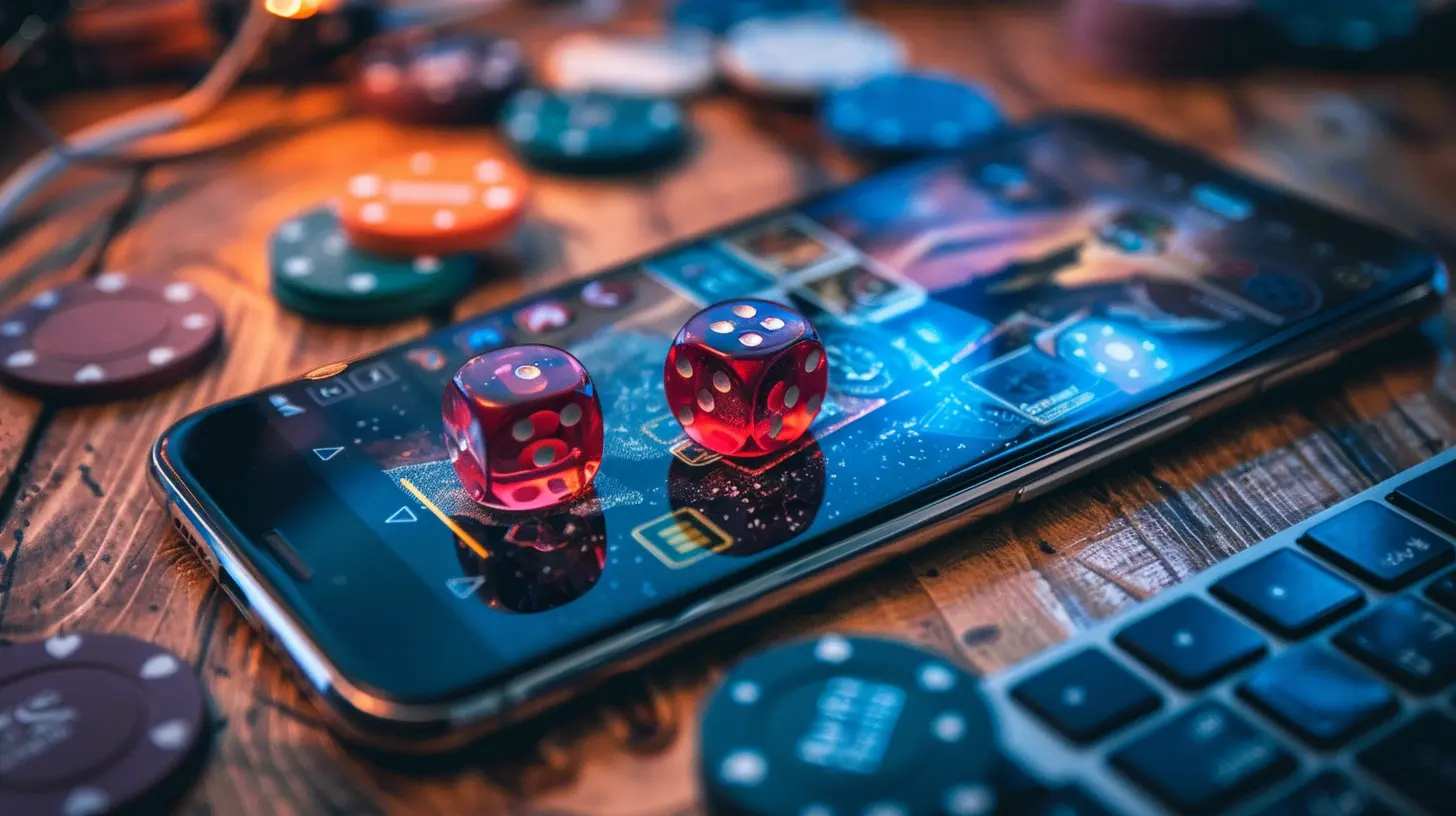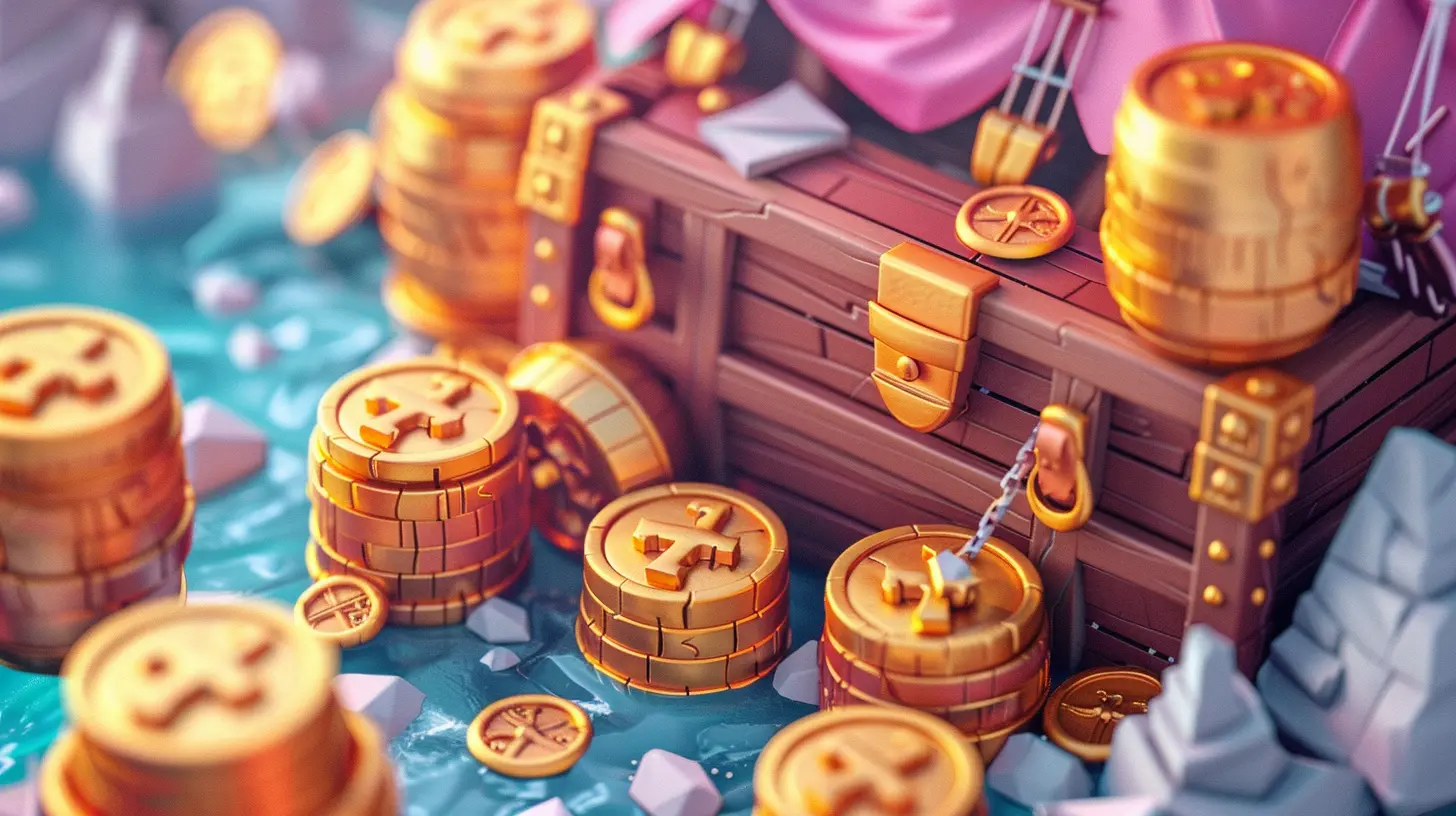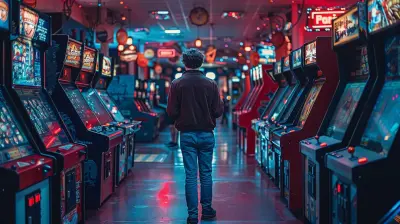Navigating Mobile Game Microtransactions Without Breaking the Bank
10 October 2025
Let’s face it — mobile games have come a long way. What used to be a simple time-killer while waiting in line has now evolved into full-blown virtual worlds, complete with slick graphics, epic storylines, and competitive multiplayer modes. But there’s one thing that often sneaks up on you before you even realize it — microtransactions.
You've probably seen it before. It starts with a free game on your phone. You get hooked. You’re leveling up, battling enemies, customizing your character. Then BAM — a pop-up asking if you’d like to buy 500 gems "for only $4.99!" It seems harmless. But the next thing you know, you’ve dropped more cash on in-game currency than you’d ever admit to your friends.
So how do you enjoy mobile gaming without draining your bank account? Let’s dive into some practical, real-world tips for navigating mobile game microtransactions without breaking the bank.
What Exactly Are Microtransactions?
Before we dissect the wallet dangers, let’s clarify what we're dealing with.Microtransactions are those tiny (but sneaky) in-game purchases that mobile games throw at you. These can range from cosmetic upgrades like new outfits or skins, to gameplay boosters like extra lives, energy refills, or even rare characters and weapons.
They usually fall into these categories:
- Cosmetic Items: Skins, outfits, decorations.
- Time Savers: Skip the wait by paying up.
- Loot Boxes: Pay to try your luck for rare items.
- Subscription Models: Monthly passes with ongoing perks.
- Energy Systems: Refill energy or attempts to keep playing.
Some are purely aesthetic, others are a fast-track to power. Either way, they’re designed to make you spend.
The Psychology Behind Microtransactions
Yep. They’re not just random features — they’re scientifically designed to be irresistible.Game developers use tactics from behavioral psychology to trigger that “just one more” feeling. Bright colors, rewarding sounds, timed events, and limited-time offers all play mind games with you. It’s called the “freemium” trap — the game is free, but the experience is gated behind your wallet.
Ever notice how games lure you by making that first purchase feel like a steal? Or how they give you the first taste of a premium item for free? That’s no accident, my friend.
Tip #1: Set a Gaming Budget (And Stick to It)
Think of this like going to a casino. If you don’t set a limit, you might walk out with a lighter wallet and a head full of regret.Set a monthly or weekly budget for what you’re willing to spend on games. Whether it's $5 or $20, decide in advance. Use platform controls (like Apple’s Screen Time or Google Play’s spending tracker) to help manage that budget.
Some even go old school and use prepaid gift cards. It’s a great way to keep your real bank account out of harm’s way.
Tip #2: Turn Off In-App Purchases
If self-control isn’t your strong suit — don’t worry, you’re not alone — technology’s got your back.Most phones allow you to disable or password-lock in-app purchases. On iOS, you can find it under Screen Time settings. On Android, go to Google Play Store settings and lock purchases behind a password or biometric scan.
This is especially useful if you’re handing your phone off to a kid who might unknowingly spend $50 on digital donuts for a virtual pet.
Tip #3: Understand the Real Cost of Virtual Goods
Pixels can cost a pretty penny.That $4.99 gem pack might seem cheap, but if you’re buying it weekly — or even daily — that adds up fast. Do the math. Divide what you’re spending in a month by what you're actually getting in-game. Is it really worth it?
Sometimes it helps to compare digital purchases to real-world equivalents. That legendary sword you're about to buy for $19.99? That’s a whole pizza — with extra cheese.
Tip #4: Play Games That Respect Your Wallet
Not all mobile games are out to rob you blind. Some are actually generous and player-friendly.Look for games with:
- An honest progression system.
- Fair monetization (cosmetics only).
- Regular free rewards.
- No energy mechanics or timers that force you to wait (or pay).
Indie developers, especially, often offer creative and fulfilling gameplay without aggressive monetization schemes.
Want a fun trick? Check the reviews before downloading. If players are complaining more about the store than the gameplay — red flag.
Tip #5: Wait Before You Buy
Impulse is the enemy of your wallet.Many games thrive on limited-time offers — “75% OFF! Only 6 hours left!” But here’s the thing: those offers? They come back. Often. Or they’re just dressed up in a new promotion next week.
Give it 24 hours. Pause. Reflect. Ask yourself: do you NEED that armor set, or are you just caught up in the FOMO?
If you still want it the next day, at least you know it’s not just an impulse.
Tip #6: Earn, Don’t Buy
Here’s a secret: many mobile games do offer in-game currency for free. You just have to grind a bit.Yes, grinding can sometimes feel like watching paint dry. But if you’re enjoying the game anyway, it’s a win-win. Instead of tossing money at the screen, you’re investing time. And that’s a much wiser trade-off in the long run.
Look out for:
- Daily or weekly quests.
- Special events.
- Login bonuses.
- Achievements and friend referrals.
Build up your stash the slow and steady way. It feels way more satisfying when you earn it.
Tip #7: Be Wary of Loot Boxes and Gacha Systems
Ah, the gambling side of mobile gaming.Loot boxes and gacha systems offer a random reward — usually with flashy animations and epic music. You might get a rare item... or complete junk. Spoiler: It’s usually junk.
These systems prey on your desire to complete a set, get lucky, or compare with friends. But they’re structured so that the odds are almost never in your favor — unless you spend and spend and spend.
If you're ever thinking, “Just one more pull,” step away from the screen.
Tip #8: Engage With the Community
No, we’re not telling you to join a Reddit war over which hero is better.But jumping into the game’s community can be insightful. Other players often share strategies on how to progress without spending. There might be guides on how to earn currency faster, beat tough levels, or unlock rare characters without paying.
Also, being part of a community makes you feel like you’re in it together — like beating the system is a badge of honor.
Tip #9: Don’t Fall For The “Sunken Cost Fallacy”
You’ve already spent $40 on the game. So spending $10 more makes sense, right? WRONG.This is a classic mental trap. Just because you’ve already invested money doesn’t mean you should keep doing it. Take a moment and ask yourself — is the game still fun? Or are you spending just because you already spent?
Cutting your losses can be the smartest play.
Tip #10: Support Games You Truly Love (Smartly)
Okay, this one might sound like a contradiction — but hear us out.It’s perfectly fine to spend money on games. Developers deserve support, especially if they’ve created a fun experience. But make sure you’re choosing to spend, not being manipulated into it.
If you must spend, go for:
- One-time purchases (like a full unlock or ad removal).
- Battle passes with solid value.
- Cosmetic items you genuinely want.
Support the games that respect your time, offer real value, and make you smile.
The Takeaway: Play Smart and Game On
Mobile gaming is a blast — no doubt about it. From puzzle games to RPGs, there’s something for everyone. But microtransactions can quietly creep in and turn a fun hobby into a financial drain.By staying aware, setting boundaries, and playing smart, you can keep gaming fun without torching your wallet. Remember, the best players aren’t the ones with the fanciest gear — they’re the ones who get the most fun for the fewest bucks.
And hey, saving your cash here means more for pizza, coffee, or that sweet new console you’ve had your eyes on.
Game smart, my friend. Your wallet will thank you.
all images in this post were generated using AI tools
Category:
Mobile GamesAuthor:

Francesca West
Discussion
rate this article
1 comments
Aisha Wallace
Microtransactions can transform gaming into a financial tightrope walk; it’s essential to balance enjoyment and budget. Mindfulness in spending can enhance gameplay without sacrificing financial health or joy.
October 10, 2025 at 3:28 PM

Francesca West
Thank you for your insightful comment! Finding that balance is crucial for a satisfying gaming experience while staying financially responsible.


